News
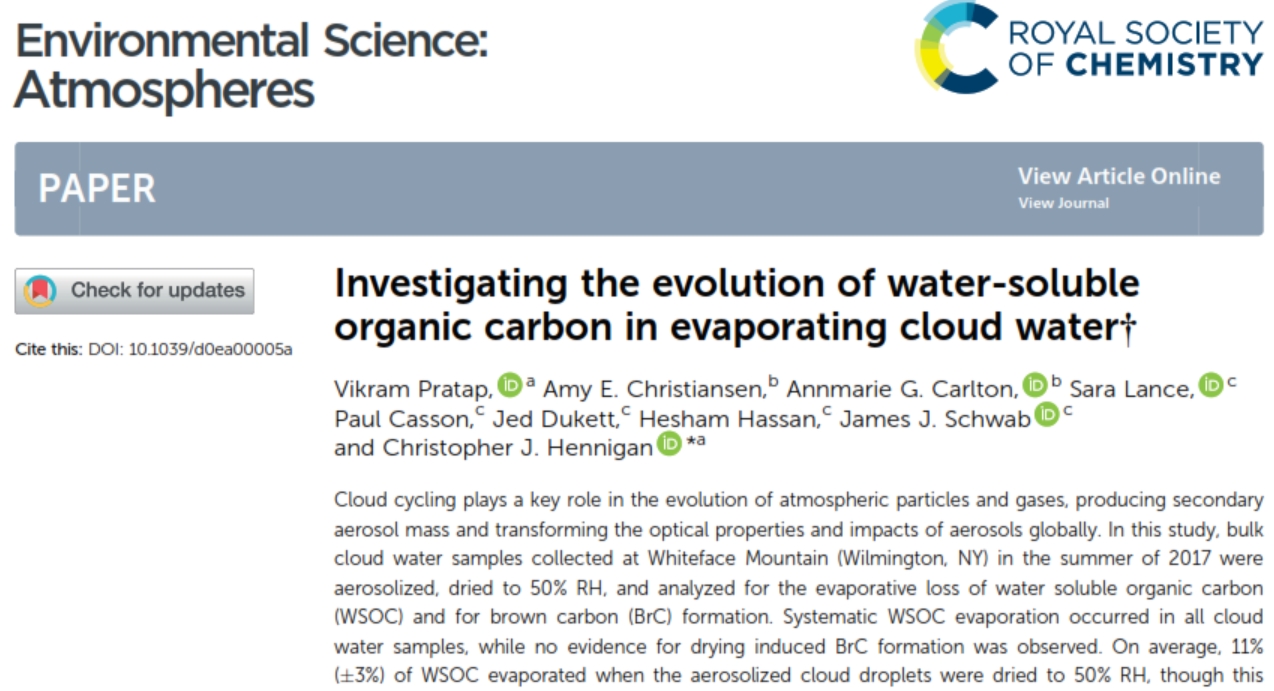
Vikram Pratap published in Environ. Sci.Dec 22, 2020Our collaborators at University of Maryland, Baltimore County have published a paper at Environmental Science titled: "Investigating the evolution of water-soluble organic carbon in evaporating cloud water" based on samples obtained during the 2017 CPOC pilot study. |
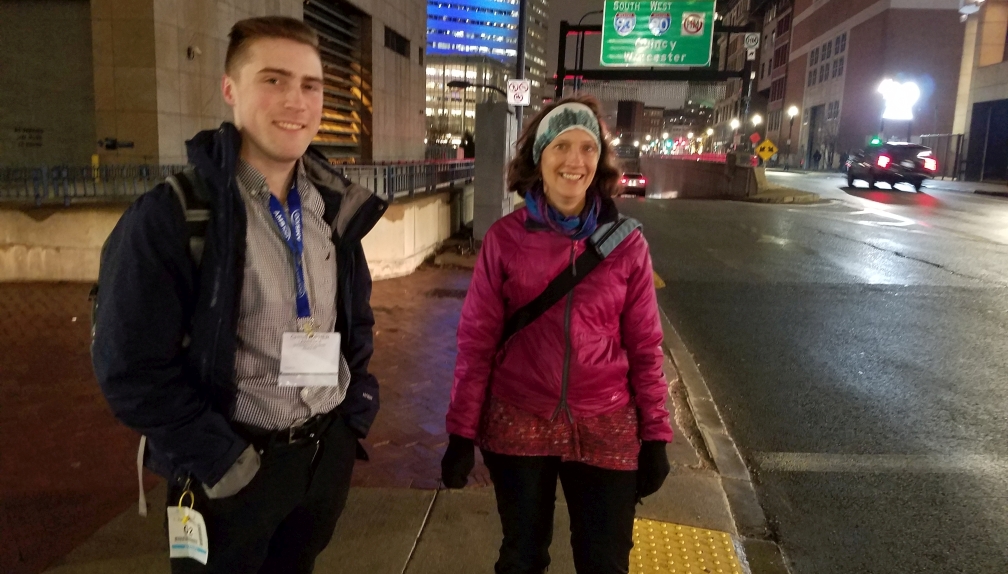
Chris awarded an ASP Graduate Visitor Program FellowshipDec 17, 2020Chris will again visit Mary Barth (hopefully in Fall 2021), this time as an Advanced Study Program participant. (This picture is from the American Meteorology Conference in Boston Jan 2020, which I think was the last time Mary and Chris were able to meet in person!) |
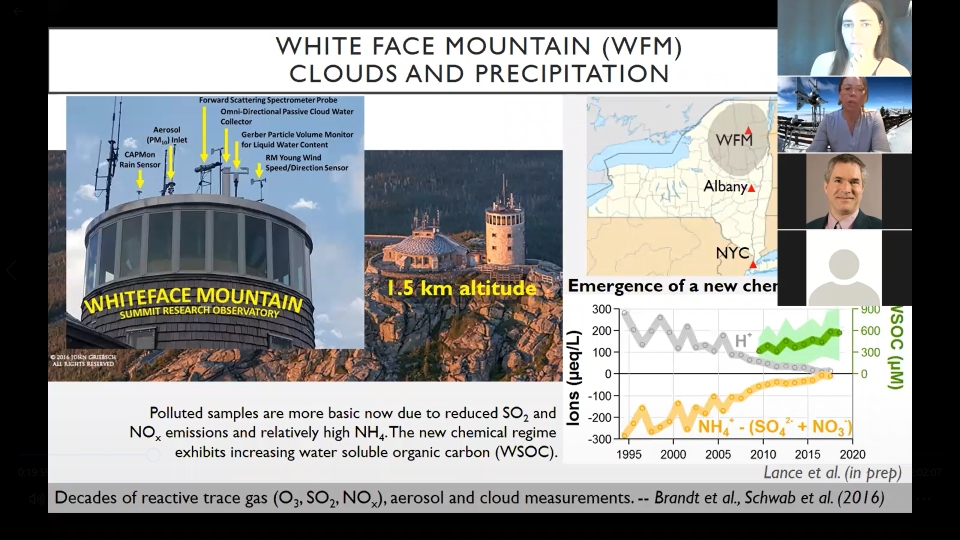
Final MOCA Network Workshop webinarNov 10, 2020The final webinar for the MOCA workshop took place on November 6, bringing back all invitees (and a few more) to discuss our refined vision for the network of mountain observatories and our plans for the upcoming infrastructure proposal. Stay tuned! |
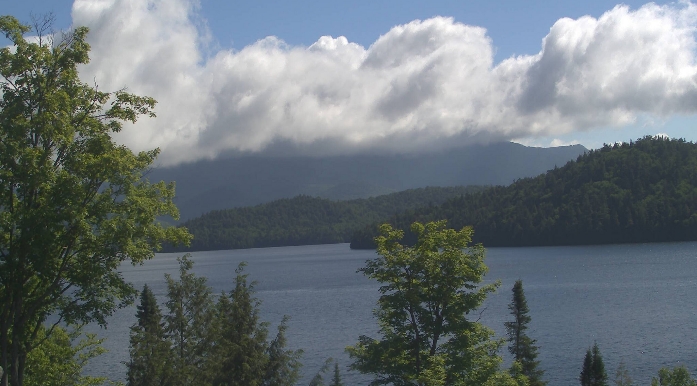
2018 and 2019 cloud water data finalizedNov 4, 2020The 2018 and 2019 cloud water data has been finalized and the datafiles have been uploaded to the cloud water website |
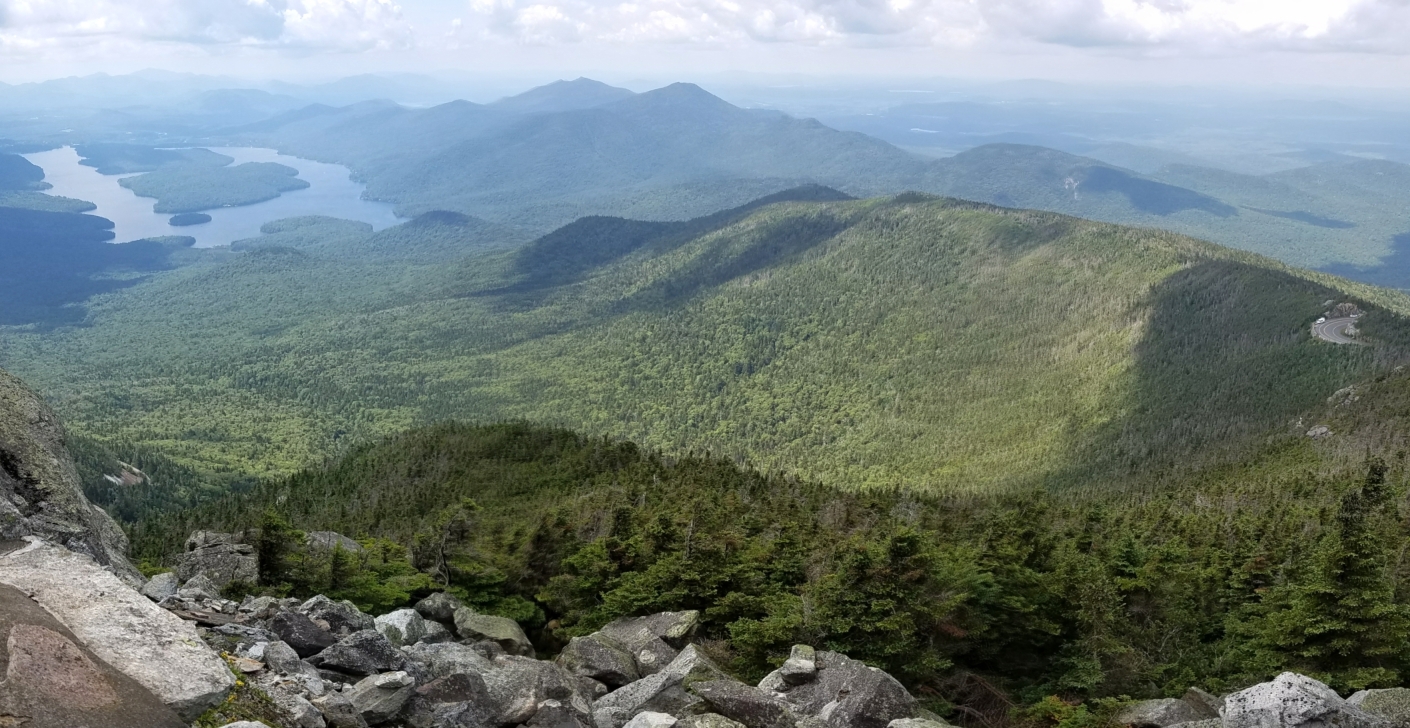
CPOC pilot study overview paper published in BAMSOct 23, 2020An overview paper on the CPOC pilot study has been published in the Bulletin for the American Meteorological Society (BAMS). |
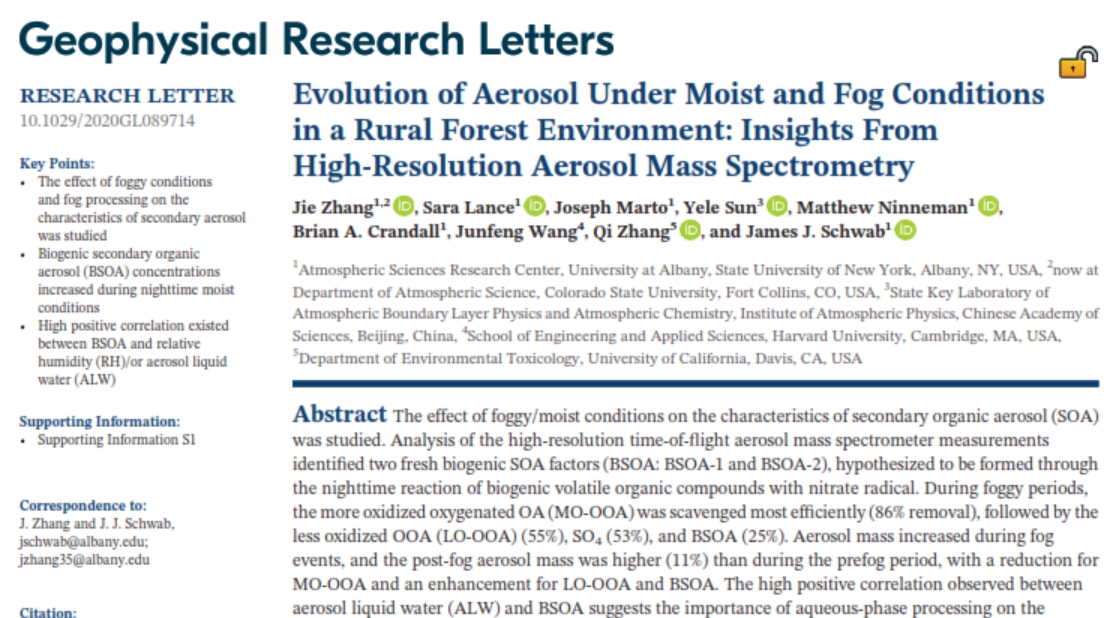
Jie publishes in Geophysical Research LettersSep 28, 2020This paper "...investigates the evolution of aerosol mass and chemical composition in moist and foggy nighttime environments in a rural forested area of the Northeast U.S. Organic aerosols that were identified as biogenic secondary organic aerosols were observed to increase in mass concentration during foggy conditions, and in this environment, they increased linearly in mass as a function of the base 10 logarithm of aerosol liquid water over a wide range. " |
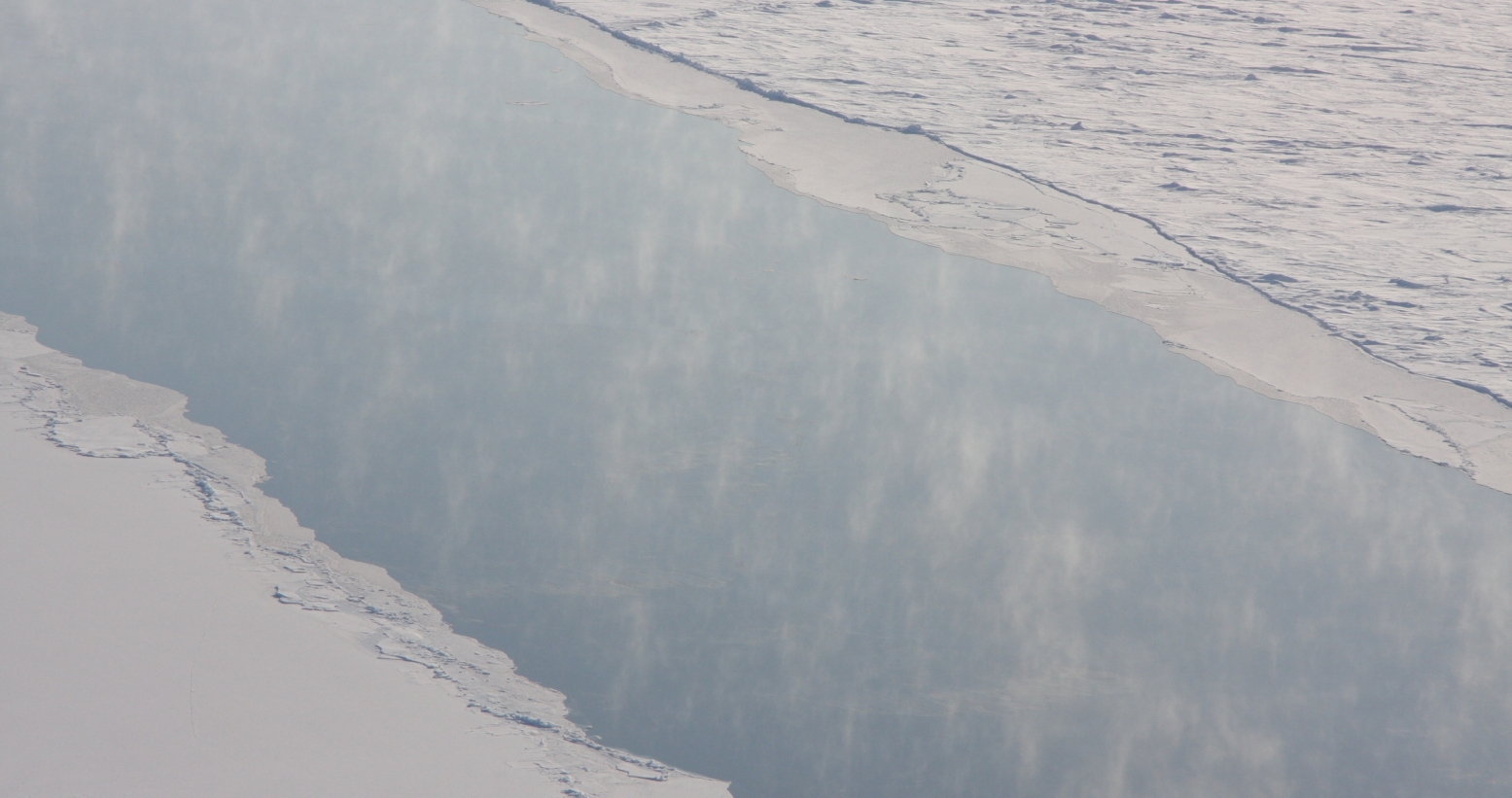
CHACHA field campaign is a GO!Sep 11, 2020Heading back to the Arctic after more than 10 years! This time we will deploy via the University of Wyoming King Air for the CHemistry in the Artic: Clouds, Halogens and Aerosols (CHACHA) project in the spring of 2022. We will be deploying a counterflow virtual impactor on the King Air so that we can characterize the cloud droplet residual composition. We will target clouds forming over open sea ice leads, like in this photo from ARCPAC 2008! |
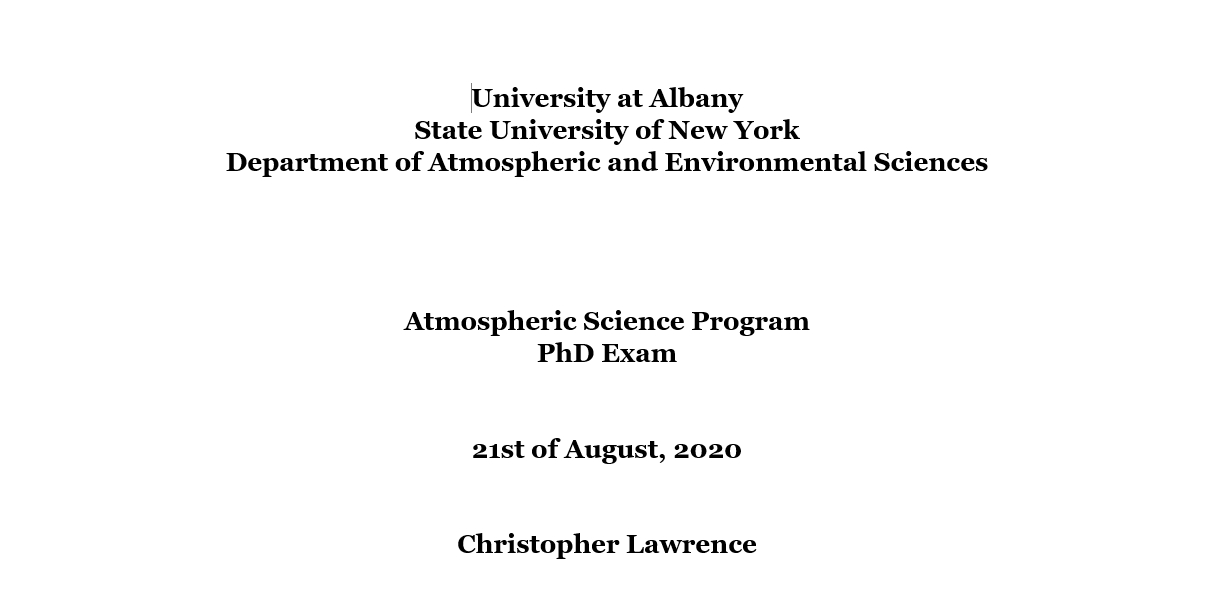
Chris passes his written qualifying examAug 27, 2020The two day exam comprised two questions posed by each of his committee members: Mary Barth, Jim Schwab, Justin Minder and I. |

Archana joins the group!Aug 24, 2020Archana Tripathy begins taking classes at UAlbany, even while she is still in India awaiting the U.S. consulates to reopen so that she can obtain her visa. She already has a Master's degree in atmospheric sciences, and we are excited for her to begin her doctoral research after joining us in the spring (hopefully!) In the meantime, she joins us remotely for weekly group meetings and literature review, even while she is 9.5 hours ahead. |
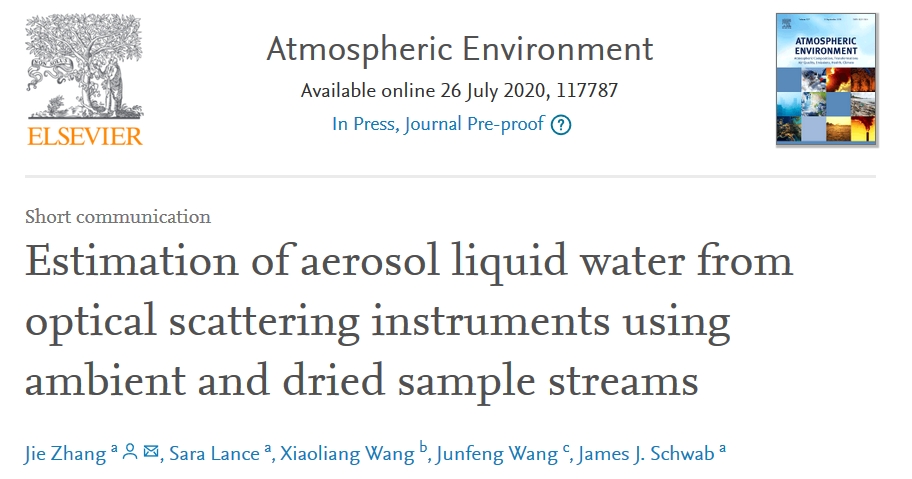
Jie publishes in Atmospheric EnvironmentJul 27, 2020This paper describes a method for determining aerosol liquid water content, an important quantity for understanding the optical properties of ambient aerosol, their pH and the phase partitioning of water soluble gases. |
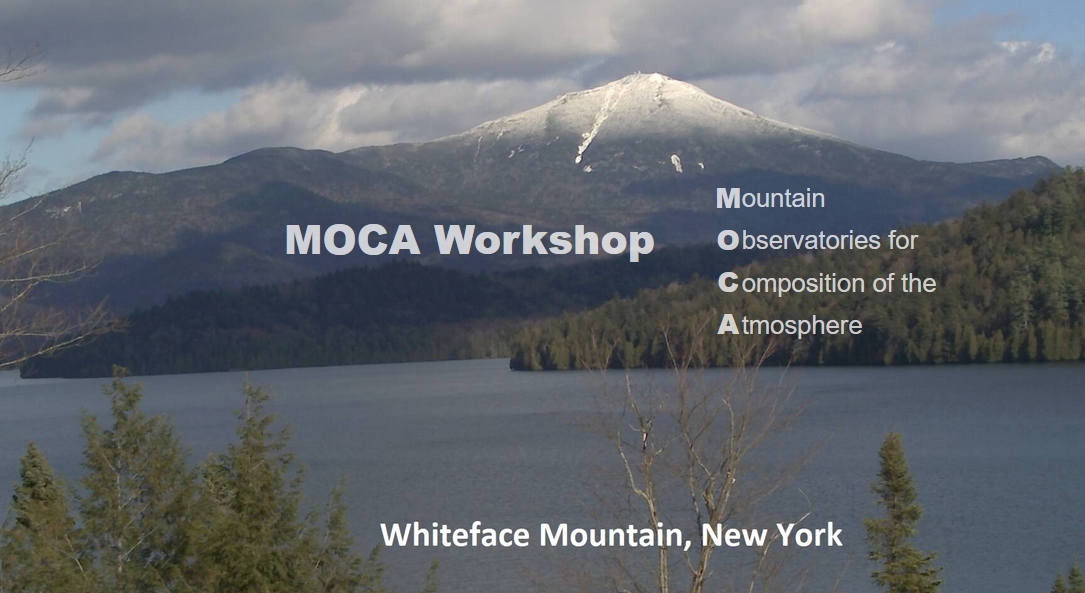
MOCA Network WorkshopJul 11, 2020The first webinar for the MOCA workshop took place on July 10. We had 38 people join the call online and begin providing feedback on our proposed network design. The next two webinars will be conducted separately with the different focus groups to delve more deeply into issues specific to those groups. We will join back together in one final webinar to conclude the virtual workshop. |
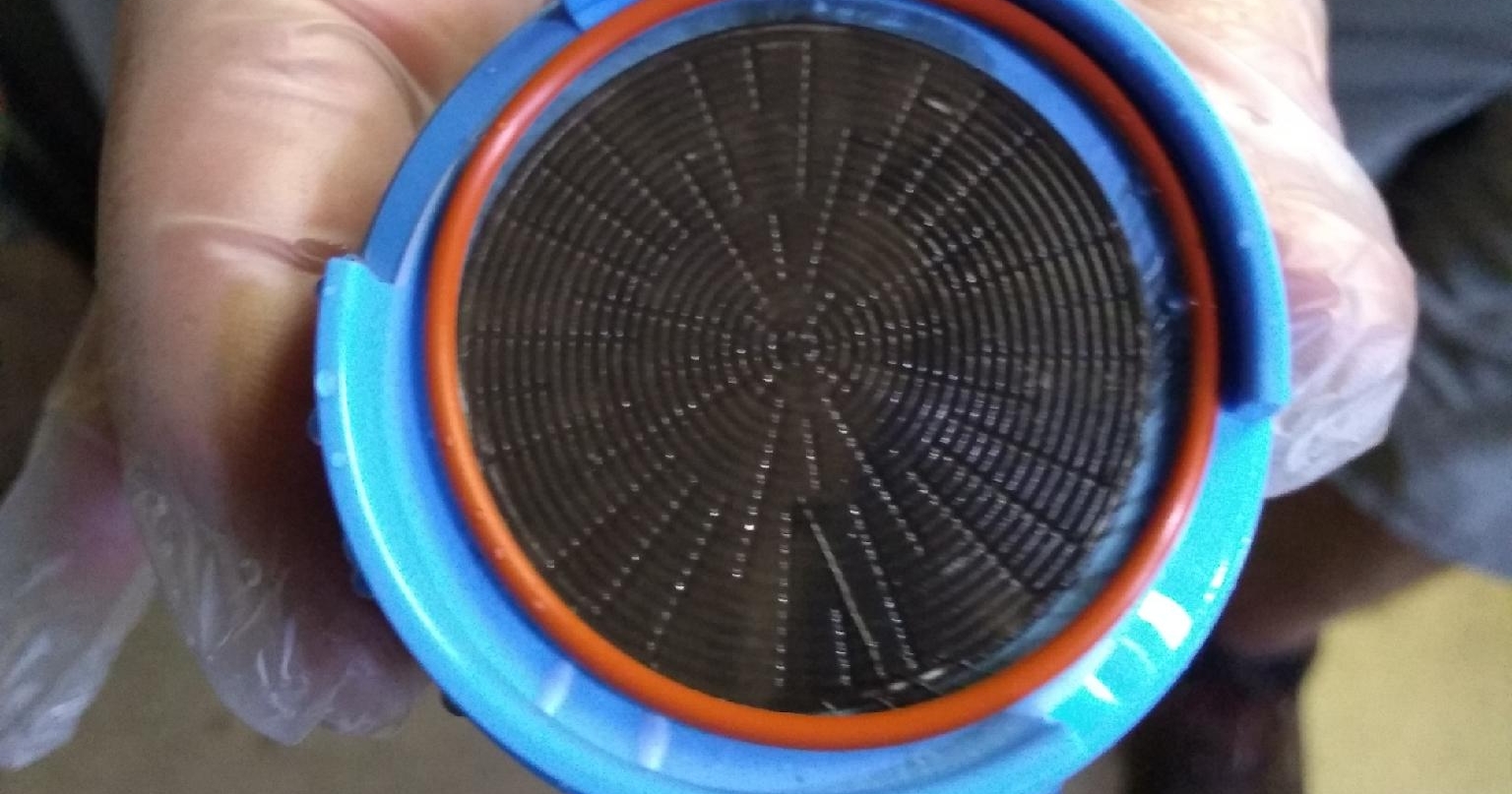
First Filtered Samples of 2020Jul 8, 2020I re-installed the peristaltic pump at the summit of WFM at the start of July so that we could start making organic acid measurements again. Nearly 2 liters of cloud water was collected with automated filtering on July 7 and another liter was collected the following morning. With only 3 liters sent through the filter shown here, the dark color suggests we encountered a polluted sample. Whether this black material removed from the cloud water is associated with biomass burning smoke, industrial emissions or something else is yet to be determined. |
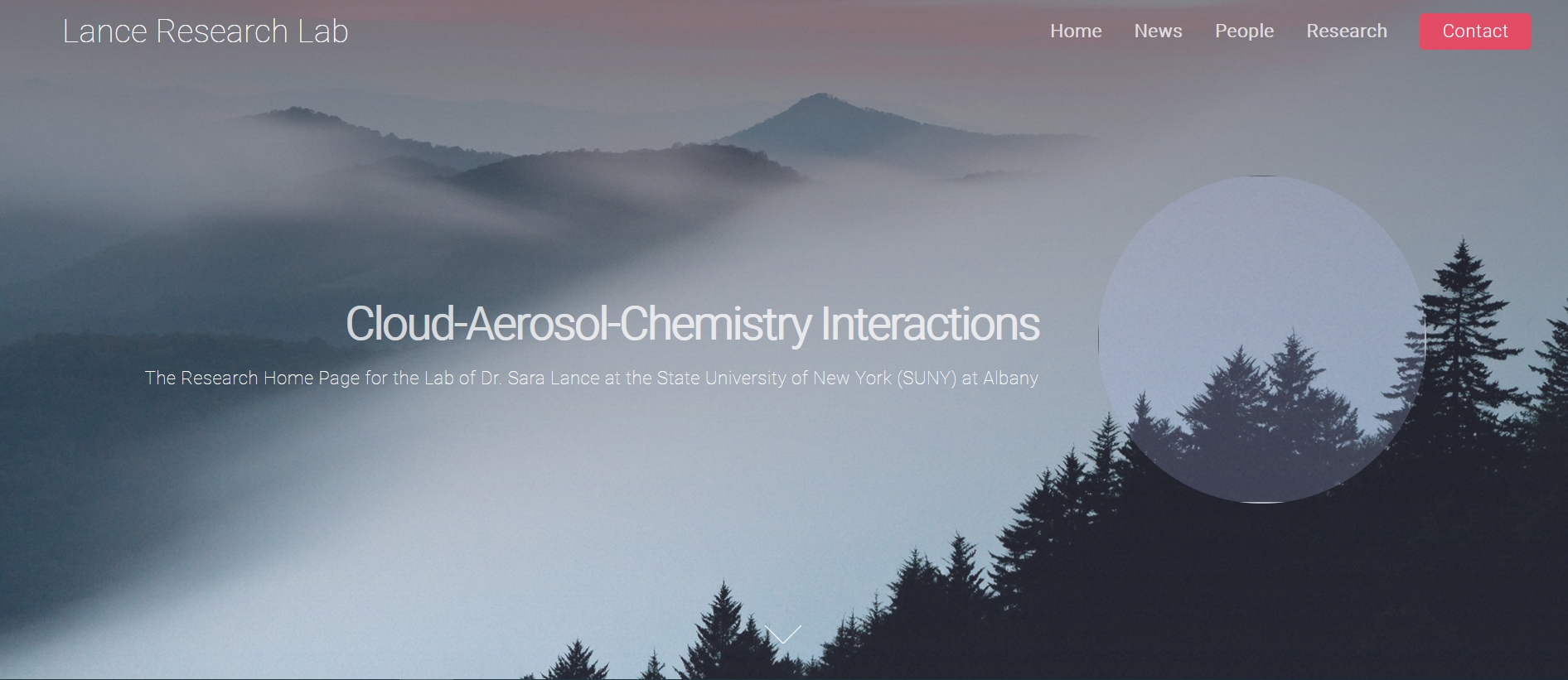
New Research WebsiteJun 28, 2020The old research website (on Wix) was so slow(!), cost money to run every year, and wasn't on an albany.edu domain, so a new website was created for a more permanent repository. Many of the old posts are re-posted again here. A free template from HTML5UP was used to create this new site. |

Chris visit to NCAR ACOMApril 6, 2020Chris was ready to start a 2 month visit at NCAR on March 9 after driving all the way to Boulder, CO. Unfortunately, the pandemic had other plans. After spending a few weeks cooped up in his home away from home, with no end in sight, he made the wise decision to return to NY early. Hopefully, Chris will be able to resume his in-person visit with Mary Barth at NCAR sometime in the next year. In the meantime, all meetings, with collaborators at NCAR and with his own group, are being held remotely. But at least he's safe and comfortable at home. |
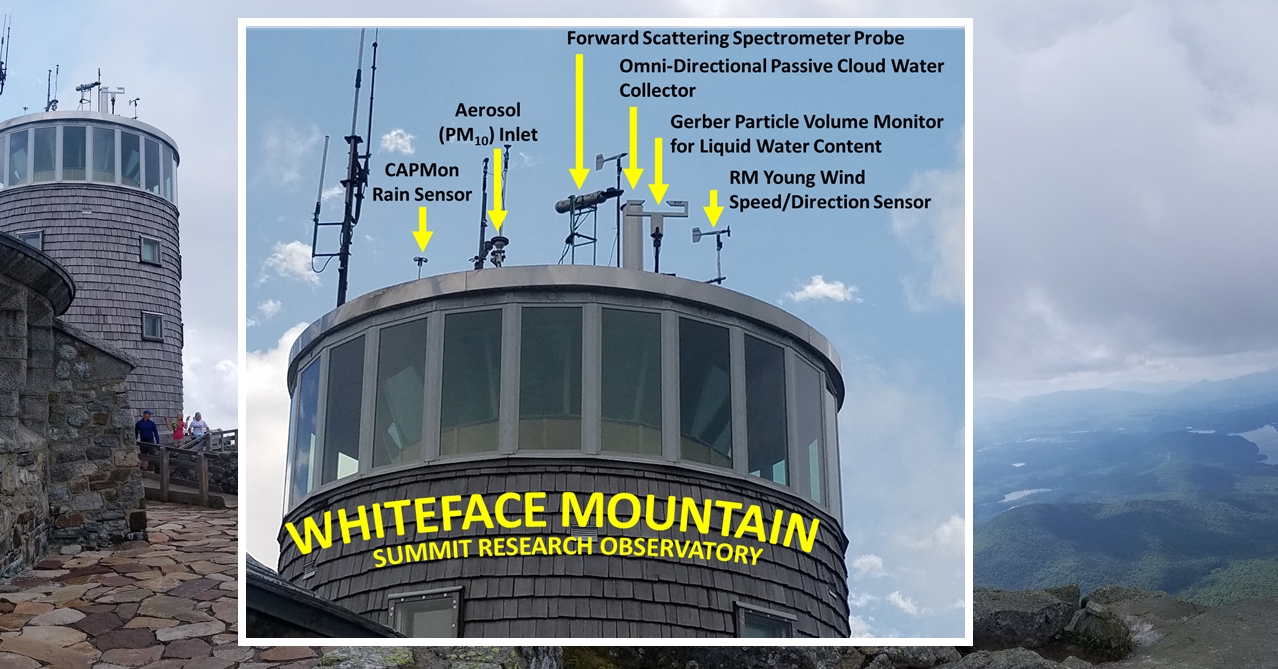
NSF CAREER Grant!Feb 27, 2020This award will enable us to make additional measurements at the summit of Whiteface Mountain to better constrain aerosol-cloud-chemistry interactions.UAlbany Press Release |
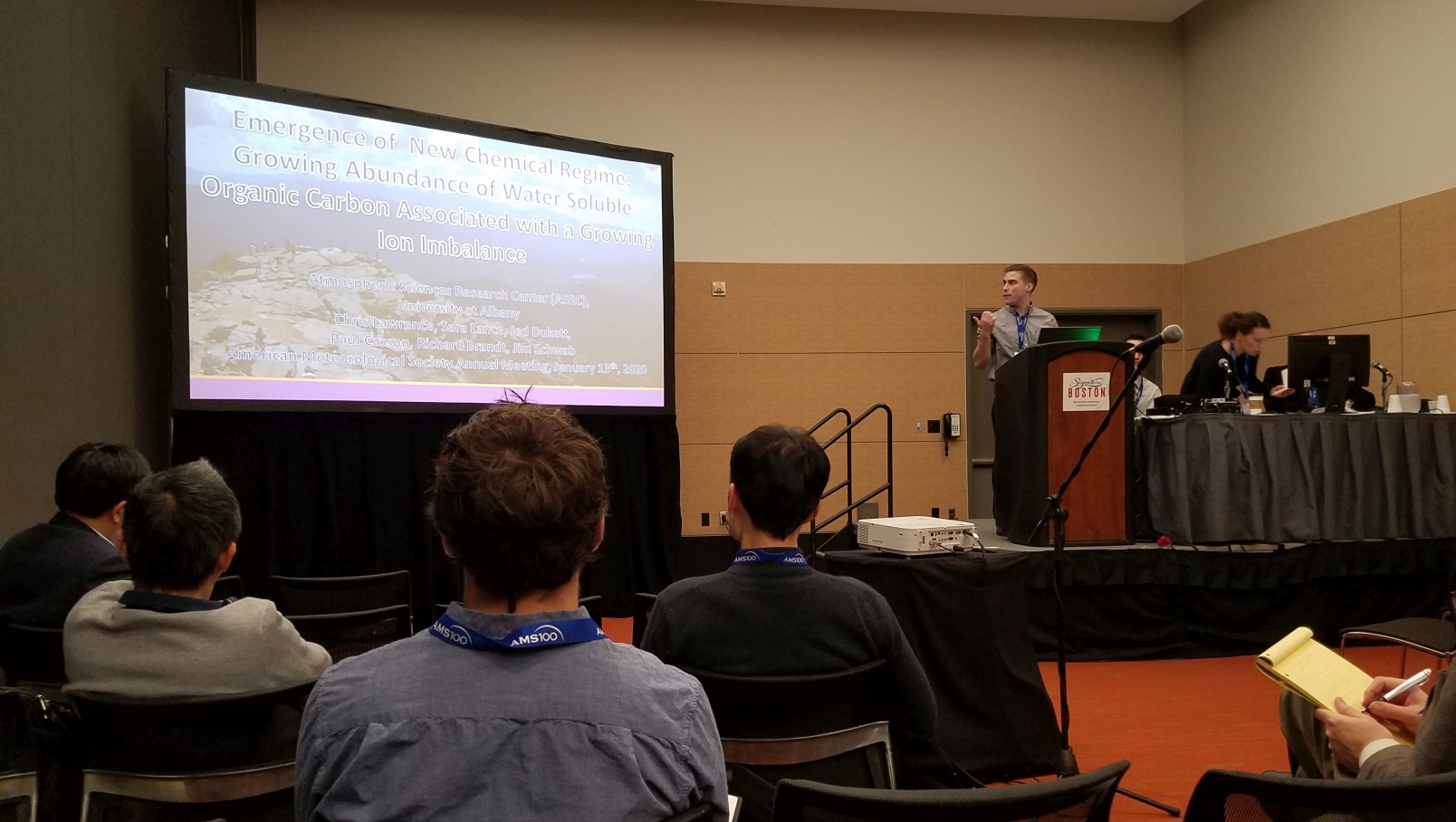
Chris' first oral presentation at a National ConferenceJan 17, 2020At the centennial AMS meeting in Boston, MA and the atmospheric chemistry sessions were excellent, with great talks on aerosol pH and aqueous chemistry, oil and gas emissions, dust and biomass burning, and halogen chemistry spread out throughout the week. |
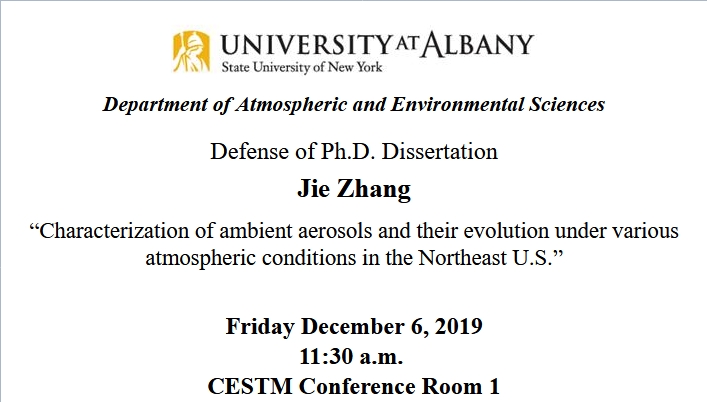
Jie Zhang's successful PhD DefenseDec 6, 2019Jie presented results from several of his published papers and papers in preparation focusing on High Resolution Time-of-Flight Aerosol Mass Spectrometer (HR-ToF-AMS) measurements and measurements obtained via the ASRC mobile laboratory (Sprinter Van) throughout NY State, including WFM, Long Island and Pinnacle State Park. |
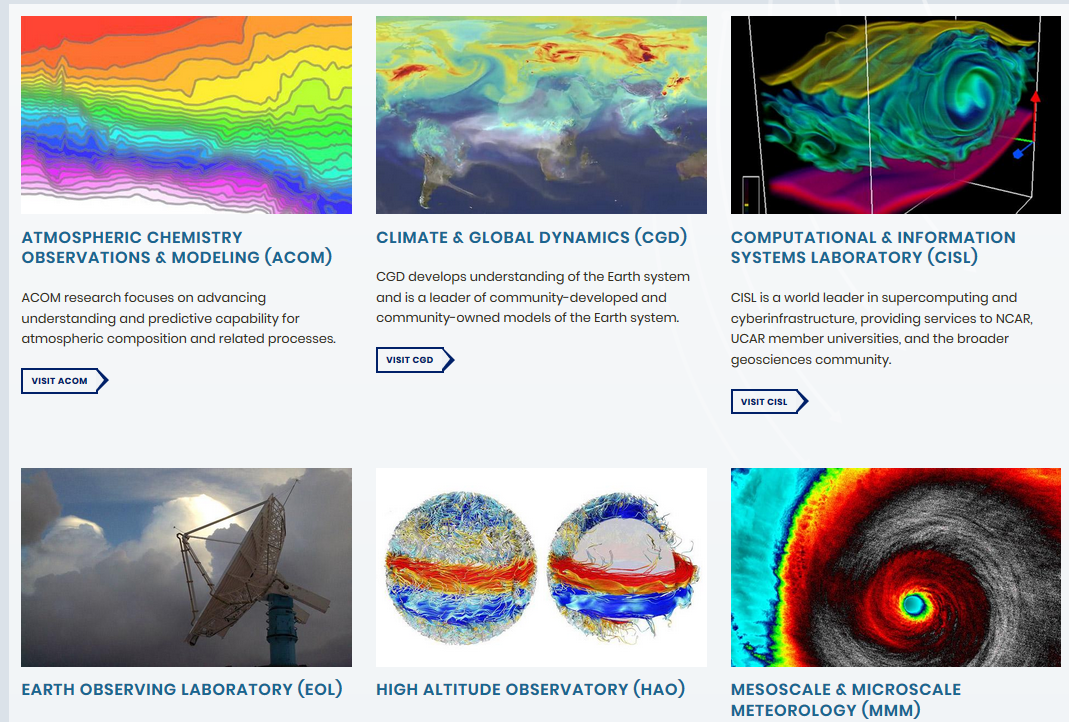
Chis receives grant to work with Mary Barth at NCARNov 19, 2019Chris received a grant from NCAR for a one-month visit to the Atmospheric Chemistry Observations and Modeling (ACOM) office in Boulder COACOM visitor program |

Chris and Sara attend the AAAR meeting in Portland OROct 18, 2019AAAR 2019 Abstract & Presentation |

Joseph joins the group!Sep 16, 2019Dr. Joseph Niehaus comes to UAlbany to perform heterogeneous chemistry experiments using the Electrodynamic Balance. Our first group photo at the top of WFM. |
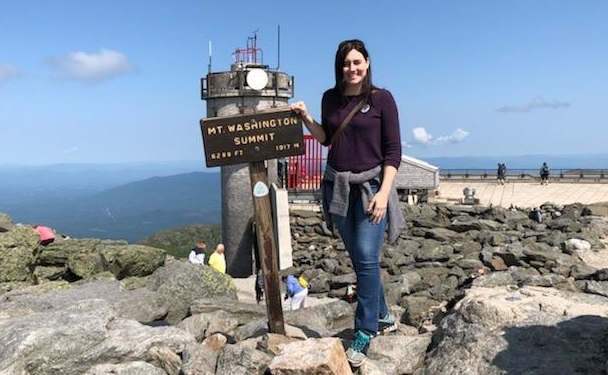
Gordon Research ConferenceAug 2, 2019The GRC Atmospheric Chemistry conference was fantastic! This year the meeting was held in Newry Maine.GRC Air Qual. & Climate 2020 Jim Schwab and I drove up from Albany and drove right past Mount Washington on the way, so we stopped in to take a tour (another first, for both of us!) |
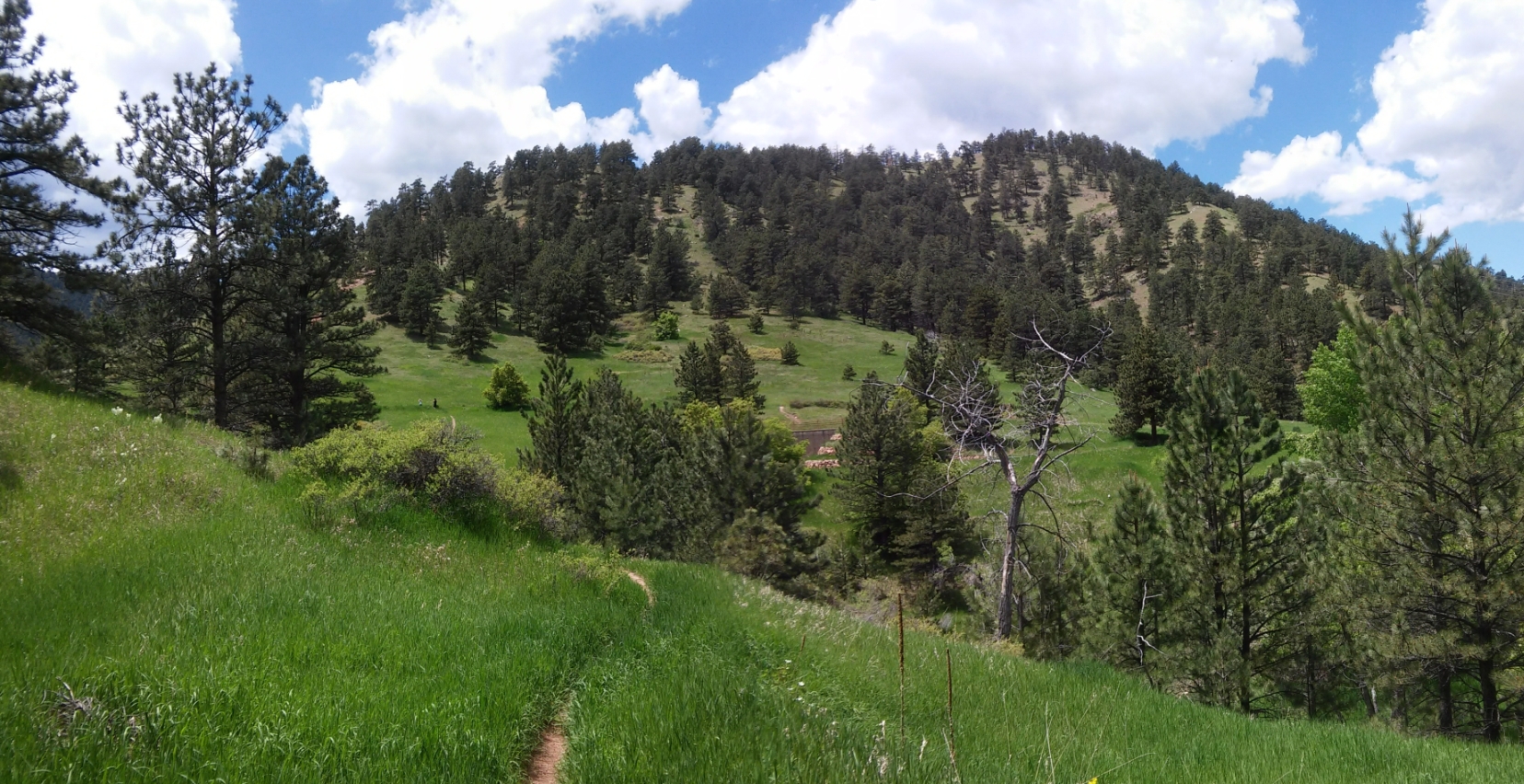
Chris summer visit to COJul 25, 2019Chris flew to CO to visit Amy Sullivan few a few days at CO State to learn to use the Particle Into Liquid Sampler (PILS) and then drove to Boulder to attend the International Conference on Photochemistry (ICP) and visit Mary Barth at NCAR to discuss modeling activities he could work on. What a productive trip! |
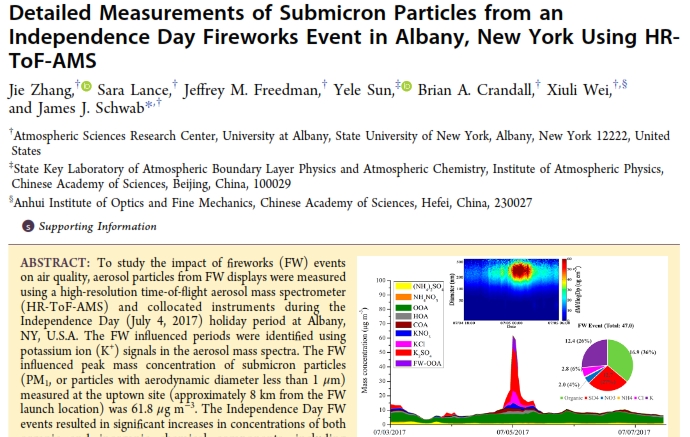
Jie publishes again at Earth and Space ChemistryJun 28, 2019This paper quantifies potassium sulfate concentrations and characterizes a newly defined "fireworks oxidized organic aerosol" factor using online HR-ToF-AMS measurements |
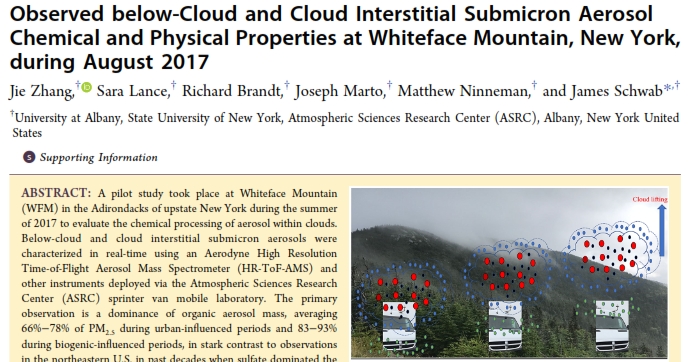
Jie publishes at Earth and Space ChemistryJun 25, 2019This paper is the first publication from the CPOC pilot study at WFM and focuses on measurements of below-cloud aerosol chemical composition, which was dominated by organic matter during the CPOC pilot study, ranging from 68 to 85% of the submicron aerosol mass, and contributing 78% of the submicron aerosol mass on average throughout the study. |
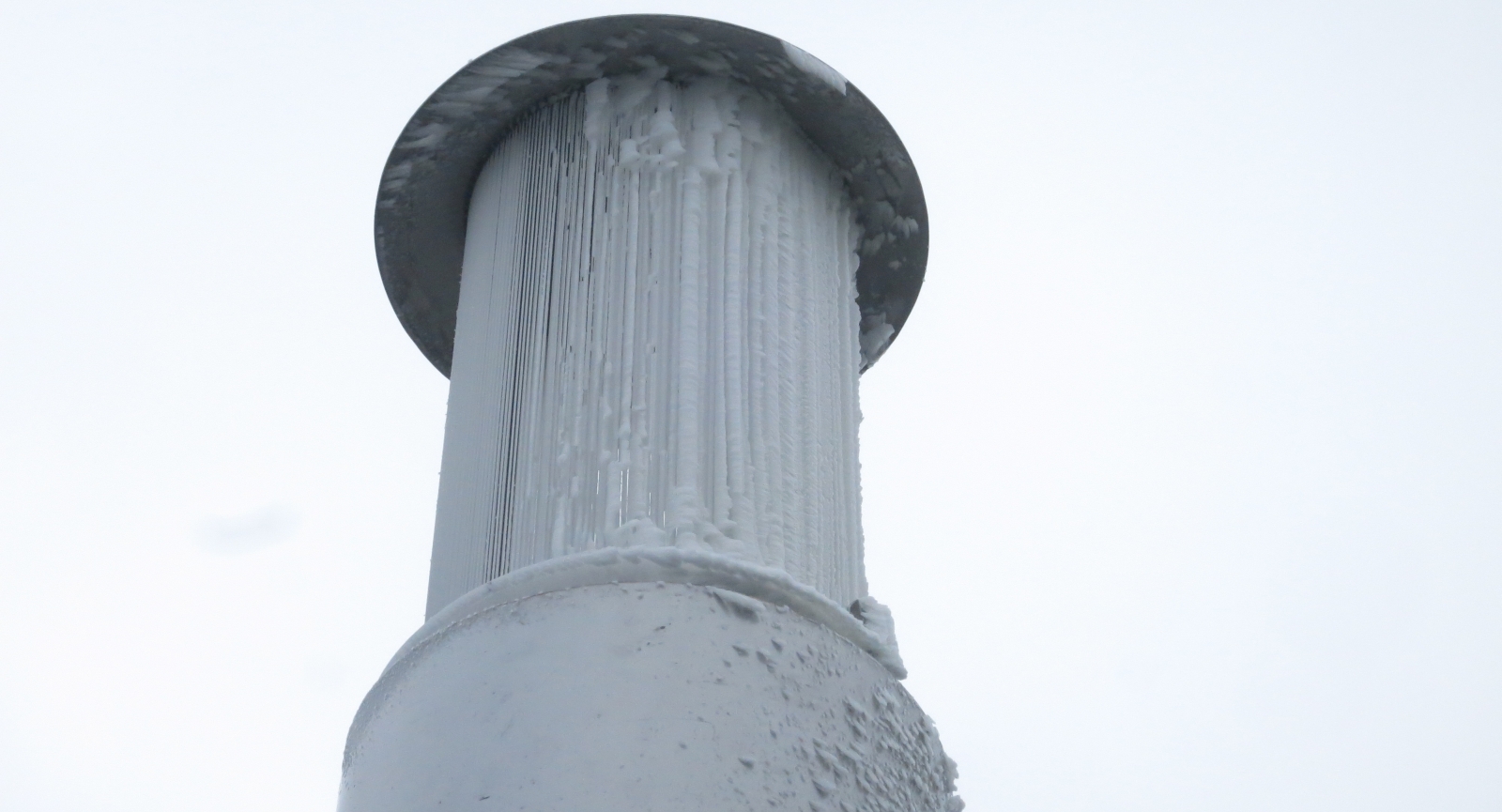
Start of the 2019 Cloud Water Collection SeasonJun 5, 2019We had everything set up by May 31st (a nice 50 degree Fahrenheit afternoon) but it started snowing by June 3rd! Unfortunately, our temperature sensor was reading incorrectly, so the cloud water collector ended up getting rimed. Luckily, Paul was on site that morning to manually override the system and bring the collector back down, so that it could thaw out before it was seriously damaged. |
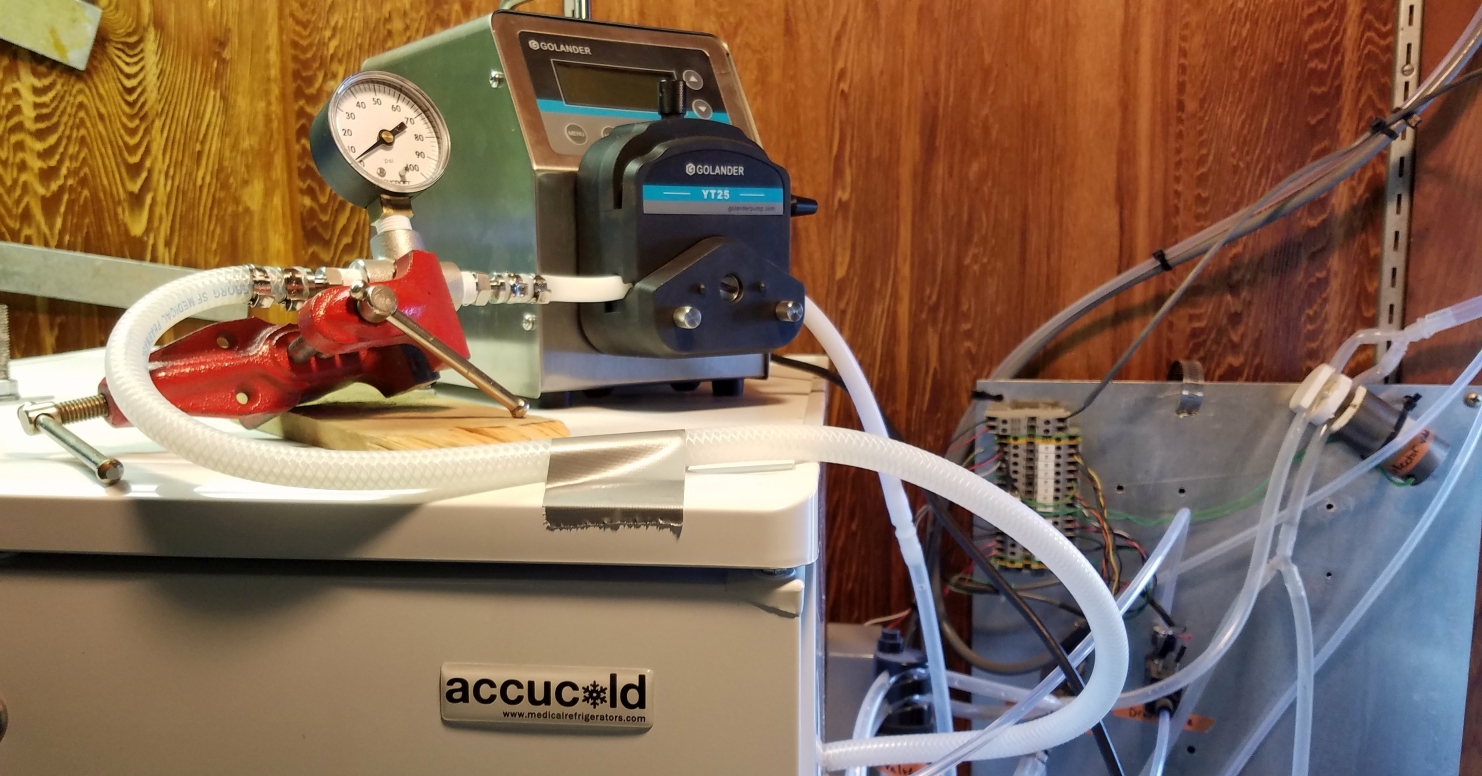
Install of new equipment at the WFM SummitMay 31, 2019A new peristaltic pump head, reinforced platinum-cured silicone tubing and in-line pressure gauge were installed for more robust automated filtering of cloud water. As in 2018, the peristaltic pump was set to turn on whenever the cloud water collector was deployed and set to turn off in clear-air or in rainy conditions, to prevent unnecessary wear and tear on the tubing. We also tested out a new automated accumulator rinse sequence, which worked perfectly the first time we left it unattended. Chris monitored the rinse sequence remotely from the car as I drove us back to Albany! Unfortunately, it never worked again so well while unattended, presumably due to bubbles accumulating in the lines, preventing the peristaltic pump from operating optimally. A bubble trap or pressure relief valve will be tried next! |
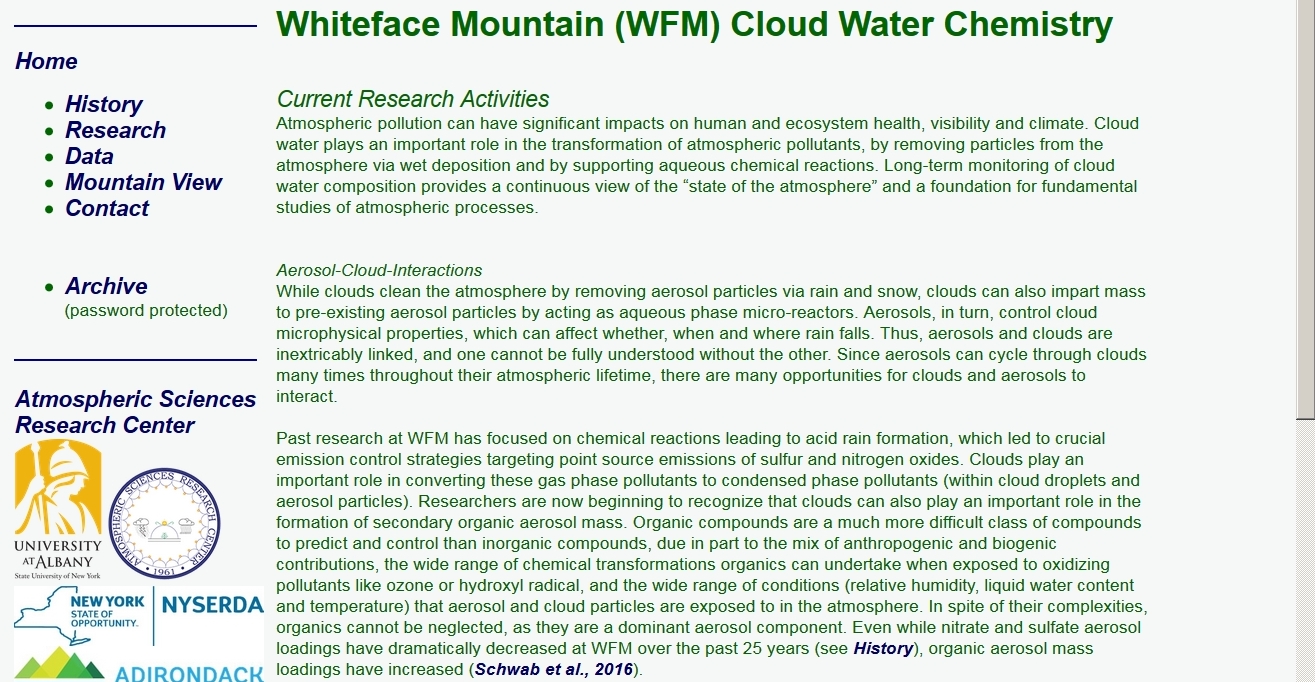
Cloud Water website is now liveJan 1, 2019Created to report data and background info for the NYSERDA project, this new website is a good way to find out more about some work being done at ASRC.ASRC Atmos. Chem. Cloud Water |
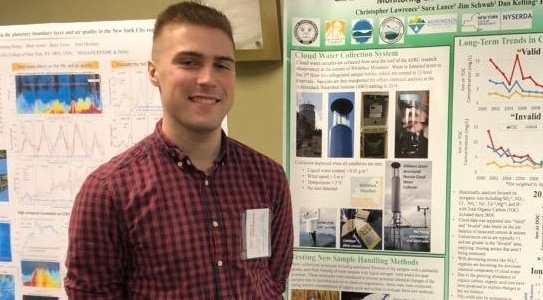
Chris presents his first results!Dec 17, 2018The end of the semester provided an opportunity for Chris to present preliminary results on the 2018 cloud water collection season and some analysis he has done with the historical data. He presented a poster at the National Acid Deposition annual meeting, which was conveniently held in Albany! He also presented at the first poster symposium at the NY State Department of Environmental Conservation Bureau of Air Quality Analysis and Research (shown here). In January he will present a poster at the annual American Meteorological Society (AMS) meeting in Phoenix. |
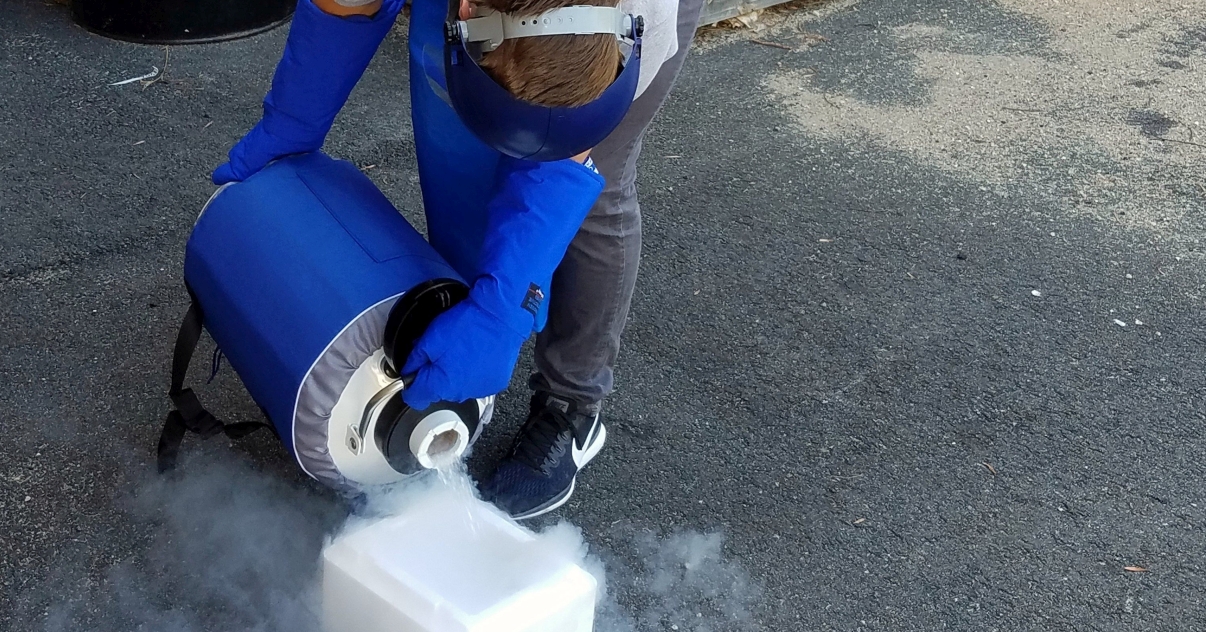
Flash Freezing Cloud WaterAug 16, 2018Brianna and Chris drove up to Whiteface Mt to assist with calibrating the CCN counter and to do some testing of the cloud water chemistry as a function of time during storage (by flash-freezing a subset of the samples at regular intervals). Cloud water samples are typically kept just above freezing in a refrigerator and then stored in a freezer (where they take several more hours to freeze solid) as they await chemical analysis. Flash freezing a 250mL sample in liquid nitrogen (LN2) takes a few minutes, we found out. As far as we know, flash freezing hasn't been done with cloud water samples at WFM before. This was suggested to us by colleagues at UC Davis and U Mich. So far we have mainly frozen test samples that we sprayed on the cloud water collector (to mimic the conditions that cloud water is exposed to, potentially including any bacterial contaminants that might have been picked up in the wind). These spray tests allow us to know what the cloud water composition "should be", and we can see how the measurements change over time after being exposed to different conditions during collection and storage. We've done a few rounds of these spray tests this summer, but this is the first time we've tried flash-freezing. |
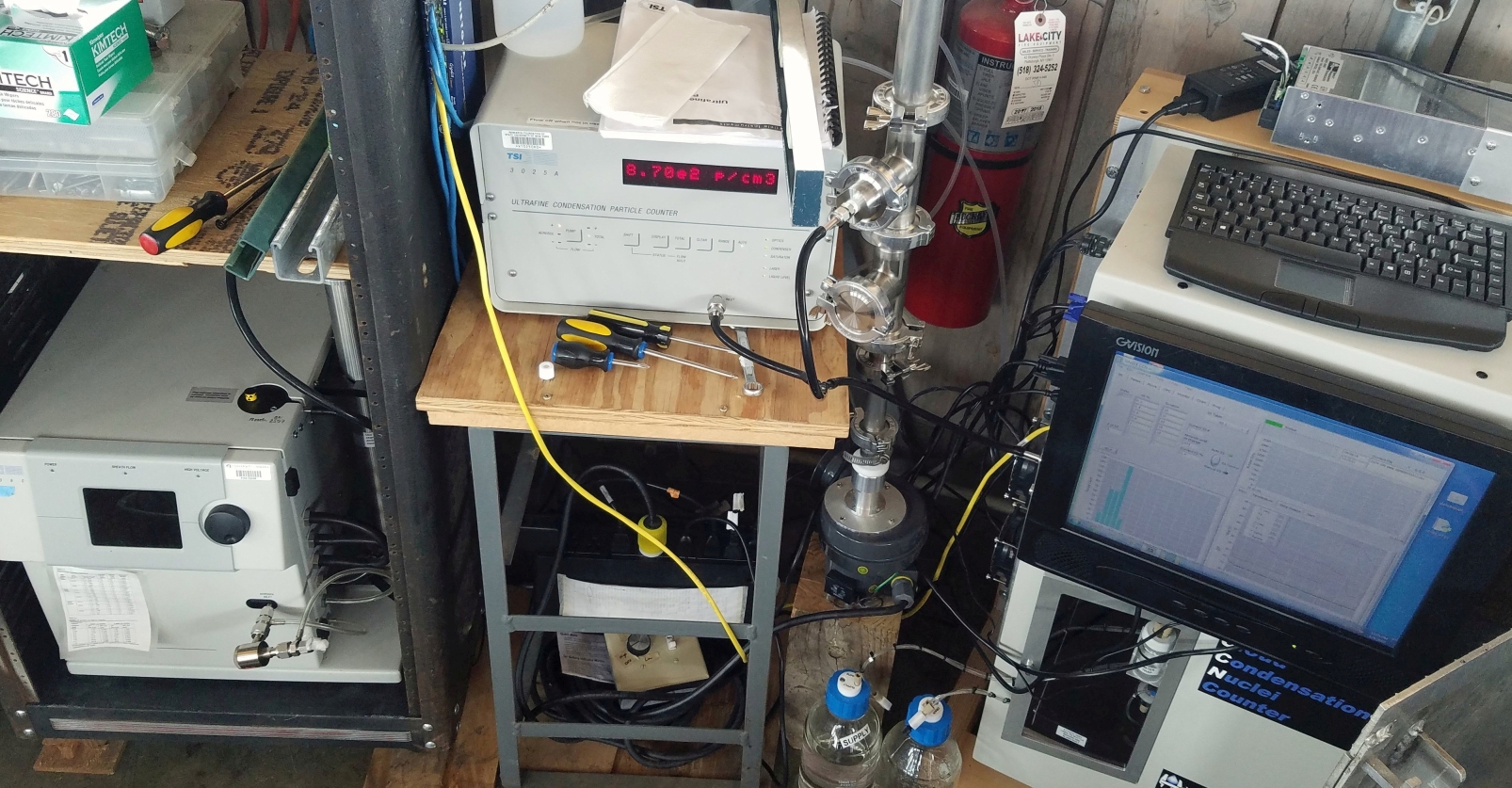
Back up and RunningAug 8, 2018After giving a Falconer lecture at Whiteface Mt on Tuesday night, I hiked up with Paul to get the aerosol instruments at the summit back up and running. The inlet (though capped) was full of bugs! And everything was covered in dust! We stored much of the equipment up there through the winter, since we knew the elevator renovations might not be finished this year. Many universities and research institutions in the US have been conducting studies on the evolution of the wildfire emissions coming from the western part of the US. Researchers involved in the NSF-funded WE-CAN field campaign that is currently taking place have said: "We will start as close as we can to the fires, and track the smoke for 12 to 24 hours of atmospheric aging. That's when a lot of the chemical evolution happens. We have very few existing samples of this evolution in the atmosphere." CSU Press Release Our measurements of particle concentrations, cloud condensation nuclei concentrations and black carbon can add to this picture if the wildfire plumes happen to drift this way (which coincides with the predominant wind direction). Our measurements could be helpful for understanding how those wildfire emissions change after several days of transport and photochemical aging. |
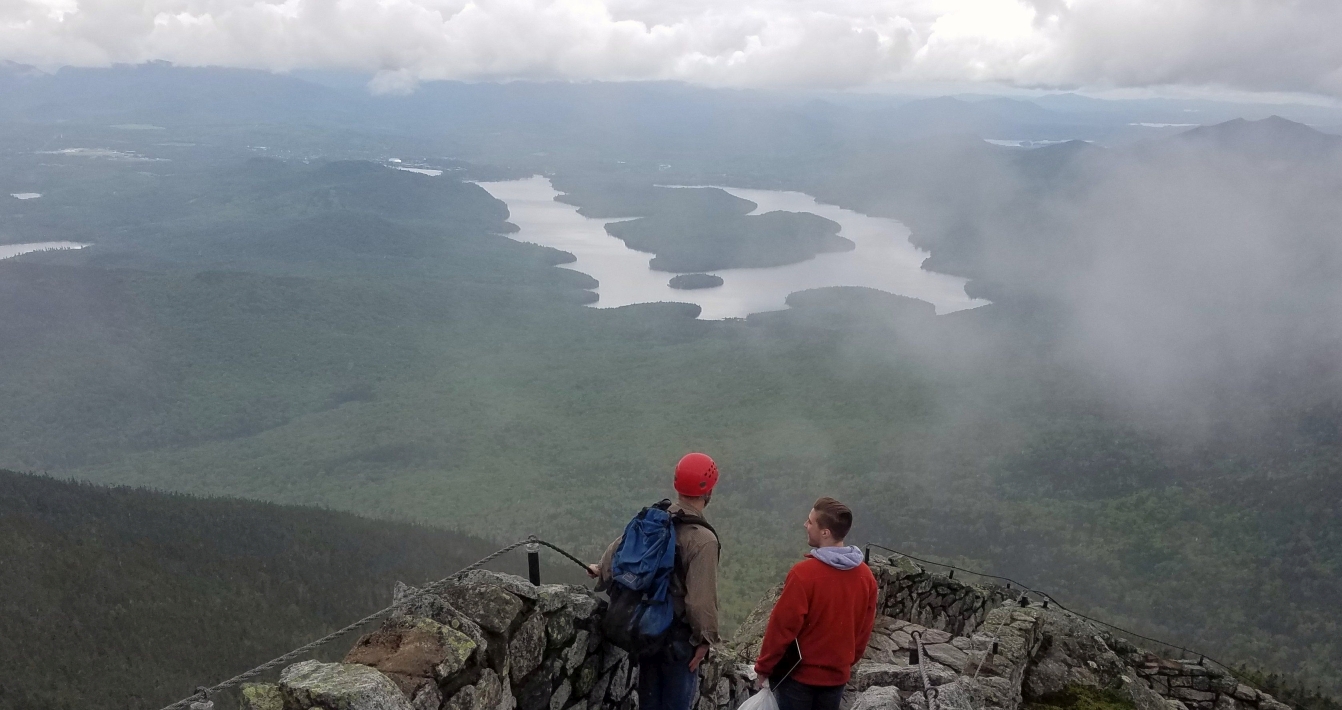
Start of the 2018 Cloud Water Collection SeasonJun 7, 2018June 4-6: New graduate student Christopher Lawrence (Chris) started gaining on the job experience at Whiteface Mountain, to assist with the start of our new cloud water collection season. Since it was drizzling and windy/cold the first couple of days, we were grateful the stairwell was still an option for getting up and down from the summit, while the elevator is being renovated (great work-out!) We installed a new peristaltic pump to assist with automated filtering of the cloud water to remove microbes that could eat up the organic acids we want to begin measuring this year. We also installed temperature sensors in the refrigerators, to check that the cloud water never warms above 4 degrees Celsius. |

Two Graduate Students starting in the FallApr 17, 2018Christopher Lawrence and Brianna Lydon will be starting graduate school in the Fall! Both will begin research this summer prior to the start of their coursework. |

NYSERDA grant approved!Apr 10, 2018The New York State Energy Research and Development Authority (NYSERDA) has approved funding over the next five years for ASRC to continue the cloud water monitoring (sampling and analysis) at Whiteface Mountain, taking over from the Adirondack Lake Survey Corporation. We will continue monitoring the inorganic compounds and will also monitor for additional select organic analytes (particularly organic acids) within the cloud water on a routine basis throughout each summer sampling season. This is a very important step towards better understanding of the increasing organic aerosol mass loadings observed at the site, while extending the decades-long dataset that has provided a wealth of information about regional air quality and the health of the Adirondacks. |
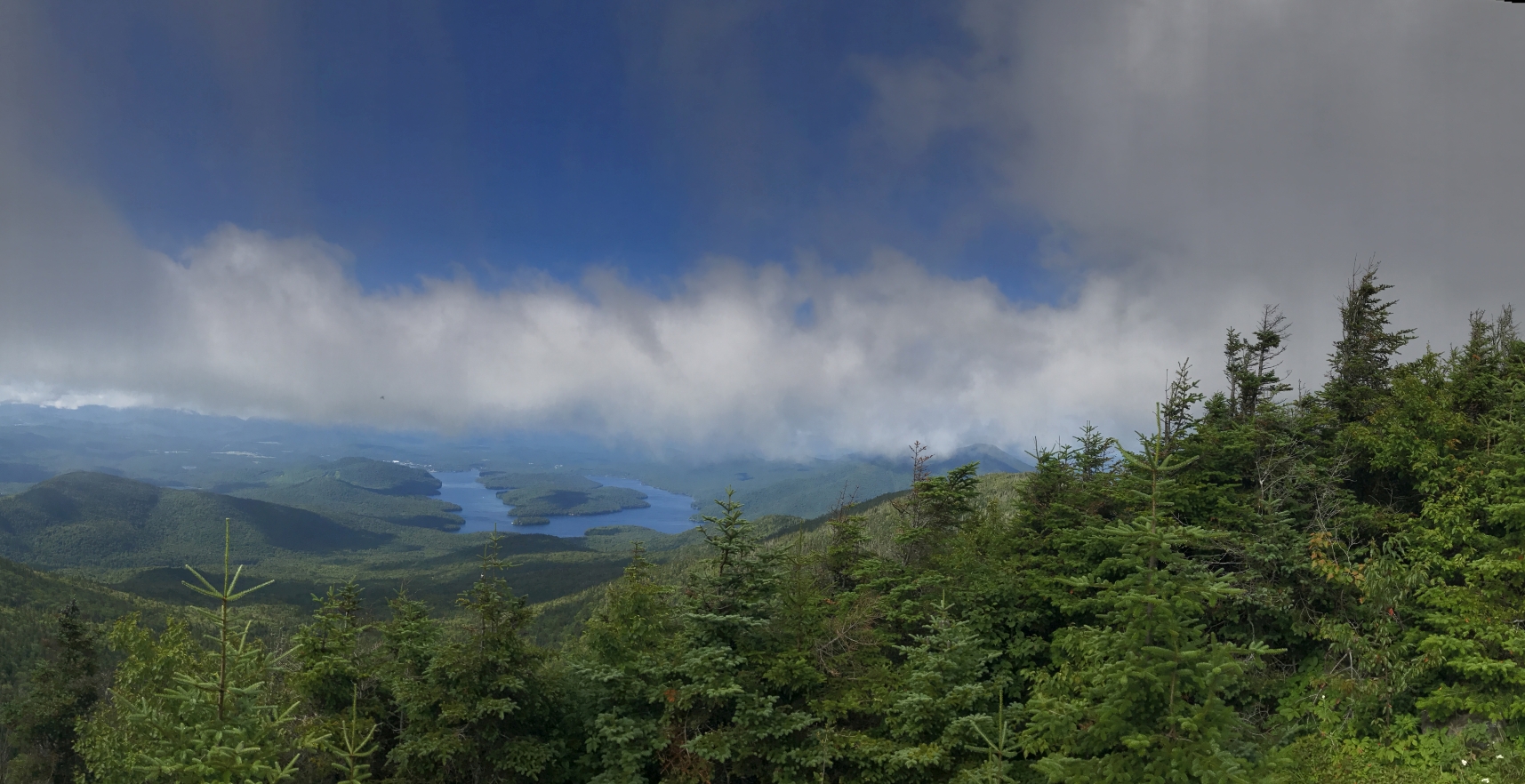
Tis the Season for MeetingsDec 18, 2017A series of meetings this winter showcase preliminary results from the CPOC pilot study as well as laboratory and modeling efforts concurrently underway by researchers at various institutes to understand multiphase chemistry within clouds. The WFM lab has been highlighted as a tremendous resource for long-term monitoring of the chemical state of our atmosphere, as well as a powerful tool for observing long range transport of chemical pollutants and evaluating chemical processes taking place within clouds.
|
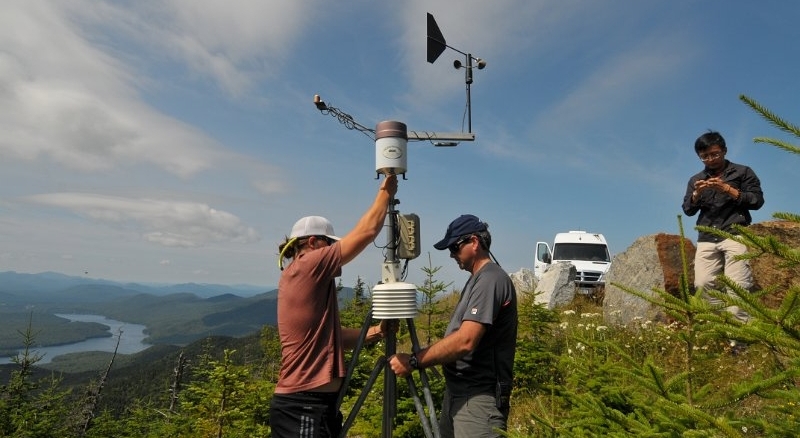
CPOC Pilot StudyAug 28, 2017We successfully concluded our ~2 week intensive Pilot Study at WFM! I am proud of the students who essentially ran all field operations, from instrument deployment, data acquisition, forecasting and balloon launches to data analysis and presentation of preliminary data at the end of the project. All of this work was coordinated between 3 field sites (Northwood School in Lake Placid, the Lake Placid Turn along the road to the summit, and the summit itself). To complicate matters, the elevator to the summit (27 stories!) could be used only sparingly, when necessary for transporting heavy equipment and supplies. Otherwise, we had a scenic hike up and down from the summit (oftentimes while cloaked in clouds). What a privilege to work in such a beautiful location and with such great people! For more information about the pilot study, including the scientific motivations, list of participants, measurements, locations and access to data, see the CPOC overview page. |
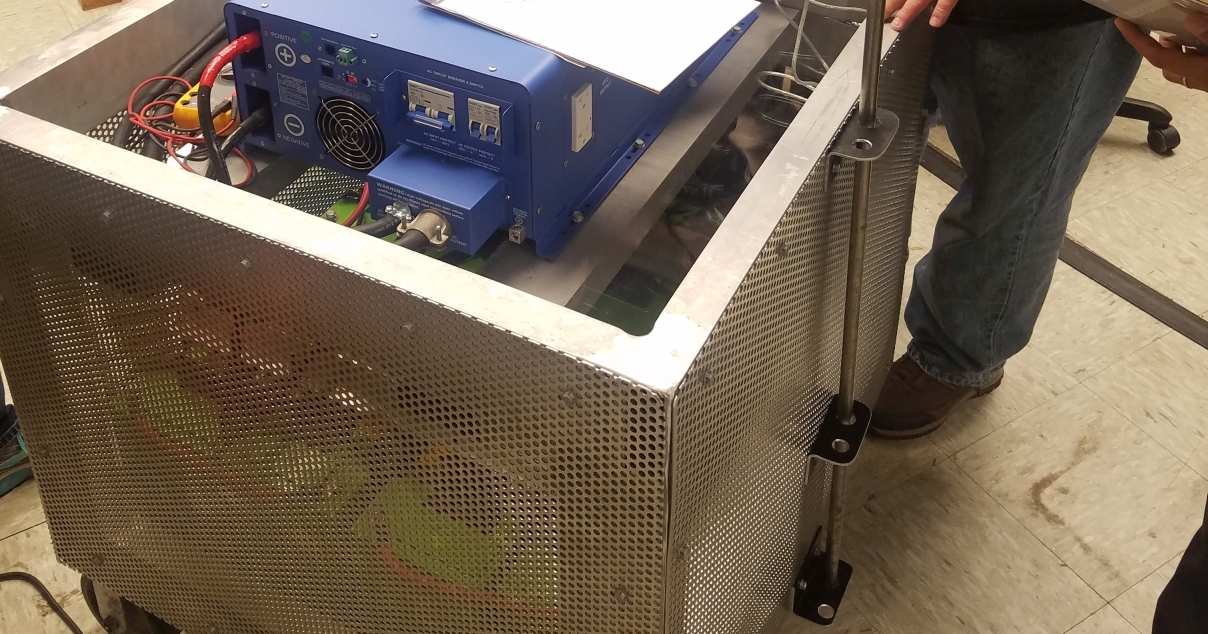
Sprinter Van preparationsAug 11, 2017The ASRC Sprinter Van (Mobile Research Facility) was given a new life, with the help of Mike Costello at DEC, in preparation for the CPOC Pilot Study. Jim Schwab purchased a new power inverter and Mike designed and built a battery cart, which ended up capable of sustaining operations (with the HR-ToF-AMS, CCNc, SMPS and two air conditioners!) for as many as 8 hours at a time. Janie, Jim and Jie all worked to get the instruments integrated in the Sprinter van just in time for the Pilot Study deployment! |
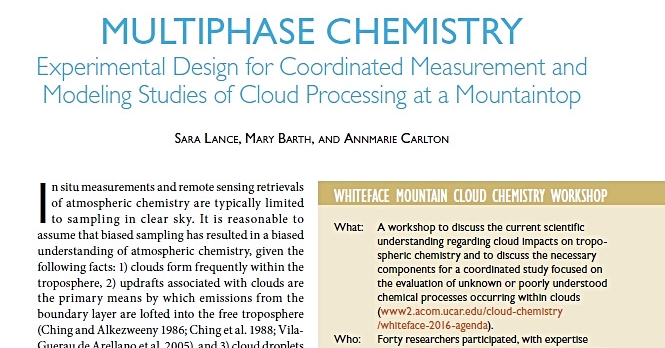
Meeting Summary Published in BAMSAug 1, 2017New publication came out in the Bulletin of the American Meteorological Society (BAMS) regarding the Cloud Chemistry Workshop we hosted last year at WFM. |
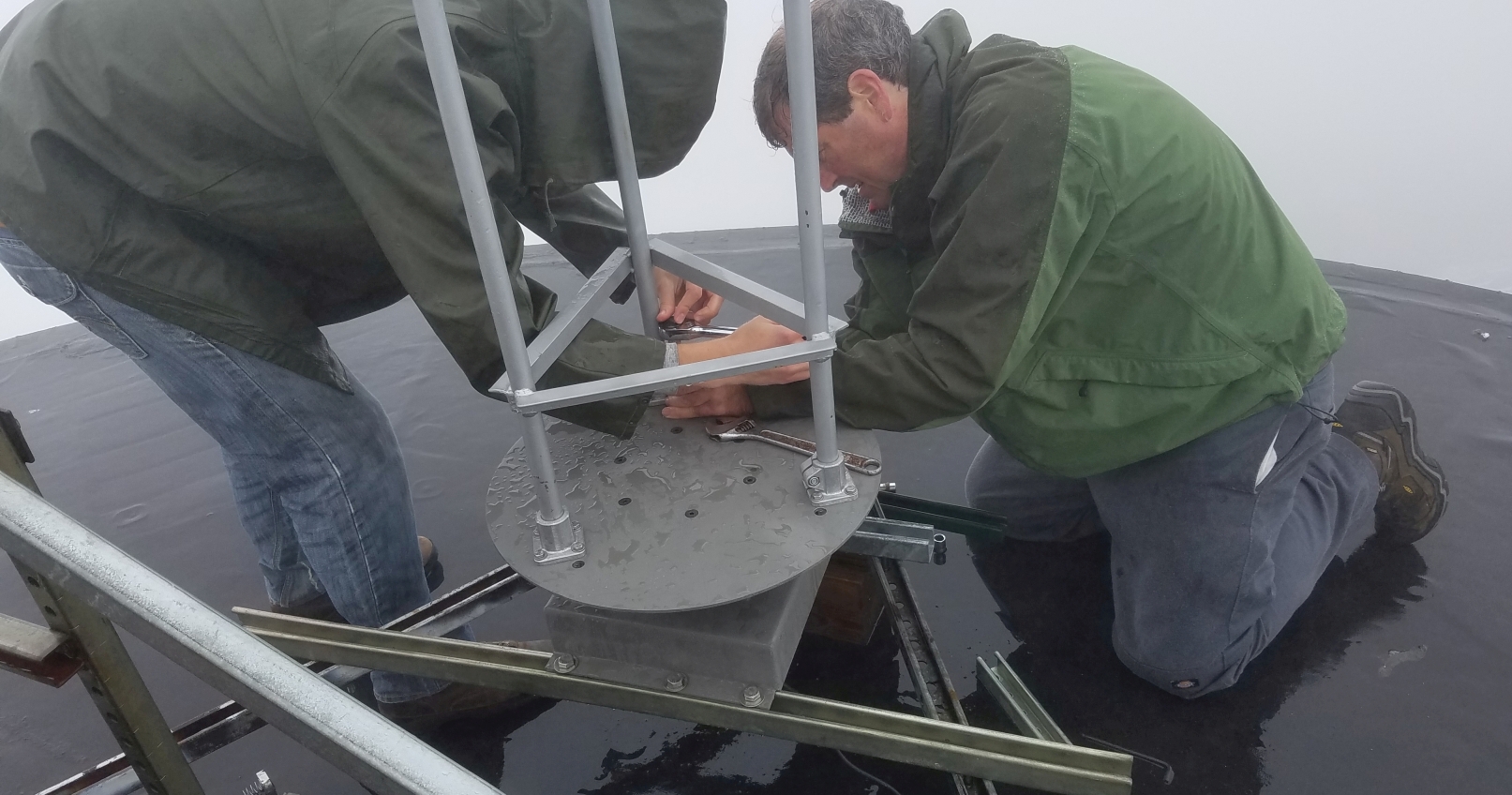
Rotating Platform for the FFSSPJul 28, 2017July 27-28: Dan has been working to control a rotating platform using an arduino microprocessor, so that the FSSP (forward scattering spectrometer probe), which measures the size and concentration of cloud droplets, will be normally facing into the wind (unless there is a rain or hail storm rolling through, in which case we will point the FSSP away from the wind to protect the rear fan and keep the instrument safe/clean). The arduino reads in a new wind direction measurement that Richard Brandt installed for us at the summit, and the plan is to add measurements from a rain sensor already being used in the deployment of the cloud water collector. Janie helped with the mechanical mounting of the FSSP tower, rotating platform, external gears and motor. Janie and John Sicker helped wire up the electronics control box, which includes the arduino, motor power supply and controller. Paul Casson and summer intern Brian Frei helped to actually mount the rotating platform on the roof of the Silo. |
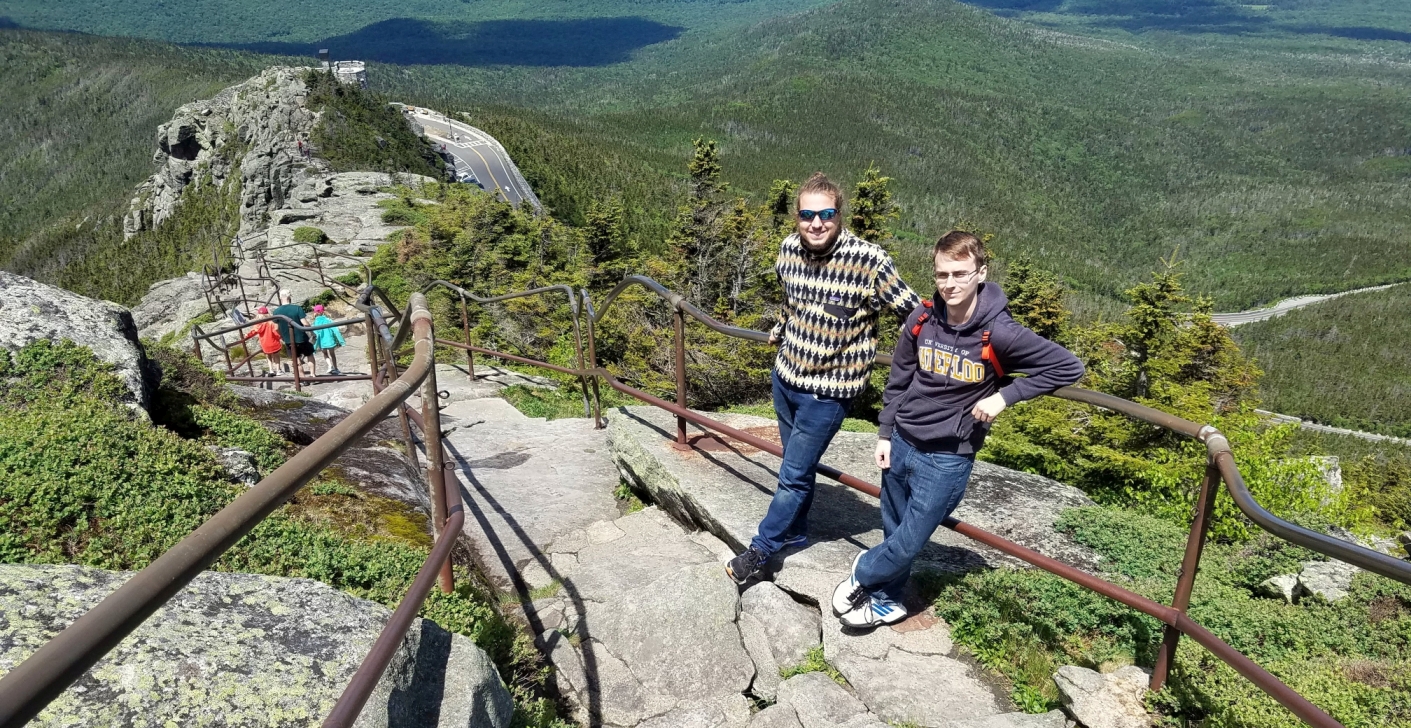
Aerosol & Cloud Instruments Deployed to the WFM SummitJun 22, 2017June 21-22: Dan and Matthew helped install aerosol instrumentation at the summit WhiteFace Mountain (WFM) research observatory to measure the particle size distribution and CCN activity of ambient aerosol this summer.May 30-31: Matthew helped install a Parsivel disdrometer at the summit WhiteFace Mountain (WFM) research observatory to measure drizzle and rain drop size distributions, just before a hail storm blew through! We also tested our retrofitted FSSP (forward scatter spectrometer probe) in clouds for the first time. |
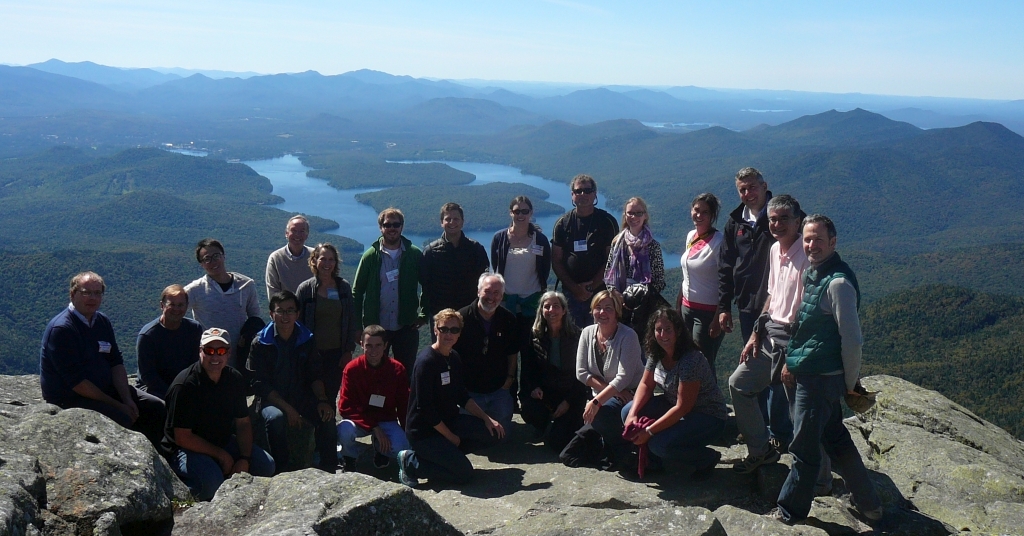
Cloud Chemistry Workshop at WFMSep 17, 2016Researchers from various institutes came together to visit the Whiteface Mountain (WFM) observatory and to discuss plans for future field projects at the site focused on multiphase chemical processes within clouds. Researchers reviewed past mountain-top field projects at various sites including WFM, evaluated the state-of-the-science regarding aqueous secondary organic aerosol formation, and developed scientific questions to be addressed with coordinated field and modeling studies. After the workshop, select researchers received sample vials of cloud water collected at the site, for chemical analysis by individual groups and future intercomparisons. Insights from previous campaigns and recommendations for future summertime field deployment at WFM were highlighted, including issues relevant for experimental design, logistics and essential personnel. For more information, see the NCAR EOL Summary and BAMS overview. |